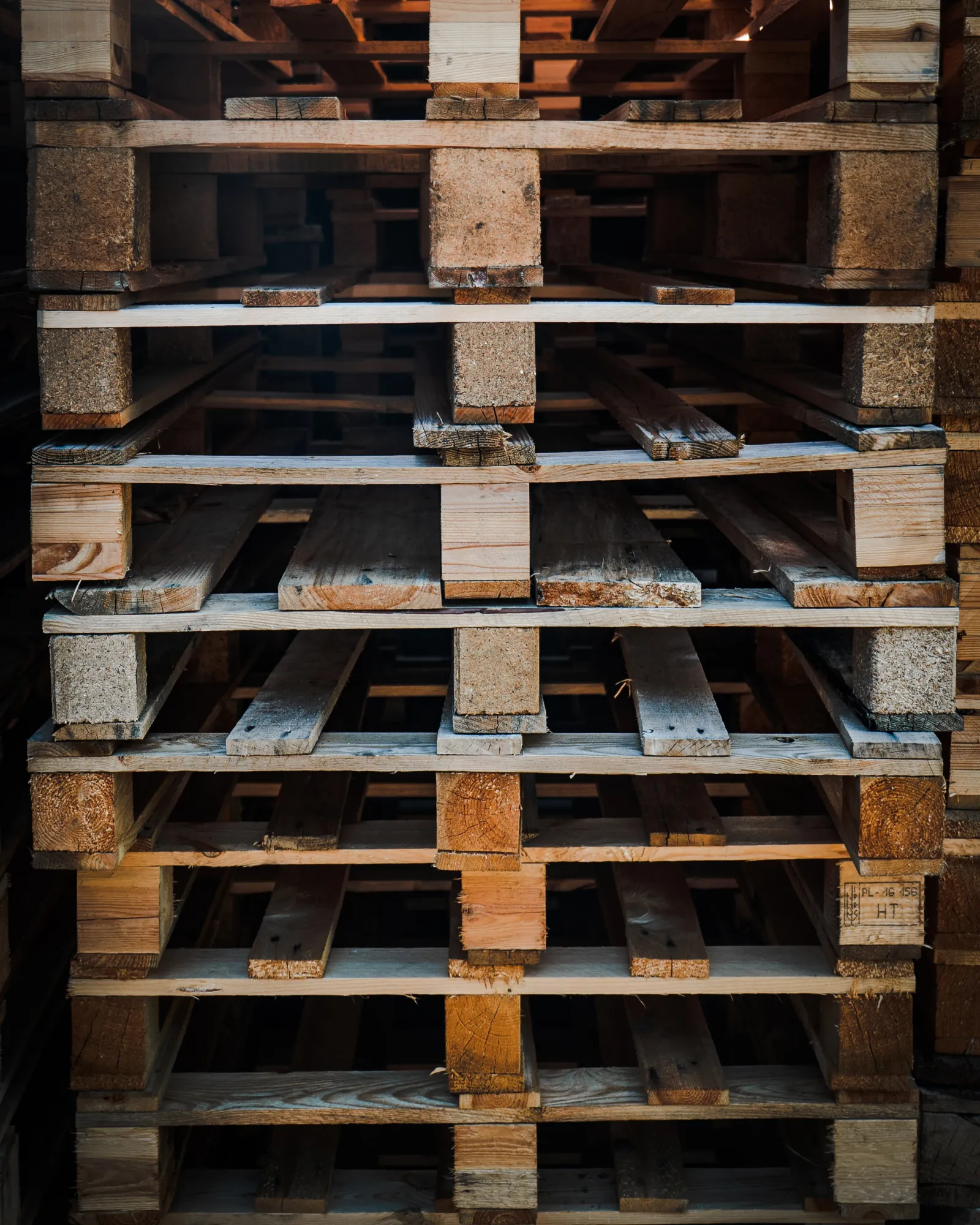Pallet Shipping: The Ultimate Guide
Optimizing pallet shipping is the cornerstone of a seamless supply chain, whether you're a burgeoning small business or a multinational conglomerate with a wealth of products to transport. Pallets aren't just a shipping tool, they're integral components that streamline your logistics process, safeguard your precious cargo, and ultimately boost your bottom line.
The efficacy of pallet shipping hinges on knowledge and strategy - but where does one start? At RS Group, we're here to unpack everything there is to know about pallet shipping. With our comprehensive guide, you'll gain insights into best practices, become familiar with the industry jargon, and unearth exclusive shipping tips.
This isn't just about shipping a pallet but doing so with an unmatched efficiency that underpins enhanced productivity and profitability. Let's dive in to unlock the secrets of pallet shipping and transform your business logistics.
Decoding Pallet Shipping: Your Glossary to Industry Terms
In the world of pallet shipping, a thorough grasp of the varied types of pallets and the terminology that defines them is a strategic advantage. Speaking the lingo of the industry veterans allows you to better discern the array of options available, leading to more informed choices when it comes to your pallet and shipping needs. So, let's decrypt the pallet shipping vocabulary with these key terms:
Skid
Frequently used as a synonym for a pallet, though not identical. A skid lacks bottom deck boards, thus making it a space-efficient choice when stacking is necessary.
Deck boards
Essentially, these are 2 x 4 wooden planks that form the flat top and bottom surfaces of a pallet where your cargo rests. These boards can either be evenly distributed or closely arranged.
2-way entry
Refers to a pallet design that allows access from two sides for forklift or pallet jack operations.
4-way entry
Describes a pallet configuration with openings on all four sides. It can either be a true 4-way entry (fully accessible on all sides) or consist of two open entries complemented by two additional recesses for forklift and pallet jack access. This design is typically favored in the industry.
Stringer pallets
Named after the 2 x 4 or 3 x 4 wooden "stringers" that support the top and bottom deck boards. Usually, a pallet will feature three or more stringers.
Block pallets
The exemplars of the four-way entry pallet design. Between the top and bottom deck boards, you'll find four to twelve solid wood blocks, with stringers set horizontally between the deck boards and wooden blocks. Contrary to some designs, they do not always include bottom deck boards.
How To Ship a Pallet
One critical factor to successfully shipping a pallet lies in its proper securing for transit. An inadequately bundled or secured cargo can sustain extensive damage during the shipping process. Let's unpack the necessary steps to ensure your pallet is shipped successfully:
Package Your Products Thoroughly Opt for a robust, unimpaired box that has the appropriate Edge Crush Test (ECT) rating for your stacking requirements. For hefty items, a double-sided corrugated box may be most suitable. Remember to include generous cushioning around your products, filling any void space with suitable padding.

Seal Each Container Employ a robust polypropylene tape of appropriate thickness depending on the weight of your boxed items. For boxes over 50 lbs, a tape with a 2.9 mil thickness is recommended. Alternatively, a thicker and stronger PVC-based tape can also be used.
Choose the Right Shipping Pallet The pallet should be undamaged with no missing or loose boards. A standard size 40" x 48", 4-way entry pallet is most desirable as it facilitates easier handling by forklifts and pallet jacks. Wooden pallets are economical, repairable and user-friendly, while plastic ones offer lightweight durability and resistance to moisture and pests. Metal pallets offer superior strength and durability.
Load and Secure Your Pallets When stacking, ensure the boxes align perfectly to avoid loss of strength. The heaviest boxes should be positioned at the bottom to prevent the shipment from being top-heavy. To secure your cargo, steel and polyester strapping are the most effective for bundled loads. Keep your bands close together to protect your shipment, using band cleats or strap protectors. Additionally, refrain from placing strapping beneath the pallet's bottom deck, as it could get damaged when in contact with the warehouse floor.
Enhance Protection with Load Protectors and Edge Boards Load protector pads and edge boards protect the top and bottom layers of your cargo, distribute weight evenly, stabilize the load, and guard the cargo against friction caused by straps or banding.
Properly Label Freight for Transport Place an address label on each box and number all boxes (x of x). Make sure the label is visible to the forklift driver when handling the freight. Attaching copies of the bill of lading to various sides of the shipment is also a recommended practice.
Pitfalls to Avoid When Shipping a Pallet Steer clear of pitfalls such as insufficient packaging, overloading the pallet, improper pallet stacking, inadequate labeling, neglecting proper documentation, ignoring carrier requirements, and failing to secure the load.
Smart Pallet Shipping Tips Avoid the risk of damaged freight or billing adjustments by keeping these tips in mind:
- Don't let your freight overhang, it can cause damage to your shipment and those around it. Ensure you understand the standard pallet size and weight and select the correct pallet for your cargo.
- Be mindful of your pallet's capacity and don't exceed it.
- Stacking multiple items on a pallet considers a single shipment. Consolidating several freight shipments onto one pallet could save money!
- Four-way entry pallets are most accessible for forklift handling.
- Avoid interlocking or pyramid stacking boxes on your pallet as it weakens the pallet and causes instability.
Get A Free Pallet Shipping Quote
Pallet Shipping Cost - LTL, PTL and Full Truckload
An inevitable concern that arises when tackling shipping needs, particularly for small business owners and operators, revolves around cost: "How much does it actually cost to ship a pallet?"
The truth is, there's no flat rate for shipping a pallet, as numerous factors outside the control of carriers or third-party logistics providers (3PLs) can influence the final freight rate. However, understanding and preparing for the variables that do fall within your control can help manage the cost more effectively. These variables include:
Location-Specific Factors - These relate to the originating and delivery zip codes, including the types of locations involved (commercial, residential, home-based business, limited access location, etc.).
Additional Services - Also known as accessorials, these could involve extra services such as liftgate, white glove, or call-before-delivery services.
Packaging - The nature of your freight's internal and external packaging can impact the cost.
Weight and Dimensions - The total packaged weight and dimensions of your shipment, including the pallet, plays a significant role in the cost.
Specialty Vehicles - In some cases, specialty vehicles required for full truckload shipping can influence the price.
Freight Class and NMFC Code - Determining your shipment's correct National Motor Freight Classification (NMFC) code and associated freight class is crucial.
It's of paramount importance to accurately include your shipment's total packaged weight and dimensions, along with the pallet's specifications. These details significantly influence your NMFC code. Even minor variations in weight can have a substantial impact on your freight quote and may result in an expensive billing adjustment later on. Carriers will invariably weigh, measure, and inspect your freight shipment using sophisticated equipment. If the carrier's measurements deviate from the reported specifications and necessitate a change in the shipment's freight class, you could face a billing adjustment after the shipment's completion. Always strive for utmost accuracy and honesty when obtaining a quote and filling out the Bill of Lading (BOL)!
Now, let's delve a bit deeper into PTL, LTL, and full truckload shipping options, which could significantly affect your pallet shipping cost:
Partial Truckload (PTL)
This option is most efficient when your shipment doesn't require an entire truck but is too large for LTL. PTL shipping can offer flexibility in size and weight and may bypass distribution centers, potentially reducing shipping times and risk of damage.
Less than Truckload (LTL)
LTL is ideal for shipments that are smaller and do not require the use of an entire trailer. With LTL, you only pay for the trailer space your freight occupies, making it a cost-effective choice for smaller shipments.
Full Truckload
This shipping method is best suited for large shipments that can fill an entire truck or when the freight needs to be delivered quickly. Full truckload shipping can often provide faster delivery times since the shipment remains on the same vehicle throughout transit.
Remember, understanding and planning for these factors can greatly assist in managing your pallet shipping costs. At RS Group, we're here to help you navigate these variables, ensuring that you receive the best value for your shipping needs.
Compare Shipping Rates and Carriers
In an industry as varied as shipping, it's essential to keep in mind that not all carriers and rates are created equal. Different carriers often have their specialties, strengths, and weaknesses, so understanding these can lead to a more informed decision when shipping a pallet.
Moreover, freight rates can fluctuate based on a variety of factors, including the time of year, market demand, fuel costs, and even geopolitical events.
At RS Group, we specialize in finding the right carrier and the best rates that fit your needs. Contact us today and let's get your pallet shipment to its destination.
